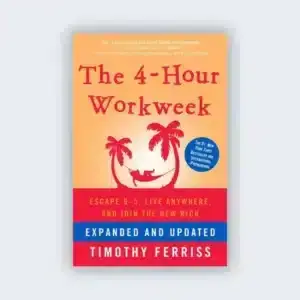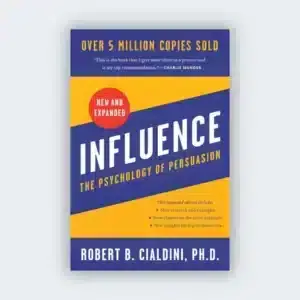Book Overview
Rich Dad, Poor Dad by Robert T. Kiyosaki has become one of the most influential books in the realm of personal finance. This thought-provoking work challenges traditional views on money, encouraging readers to adopt a mindset that leads to financial independence. Through personal stories and practical advice, Kiyosaki highlights the contrasts between two distinct financial mindsets—those of his two father figures—and uses these differences to explore the principles of wealth-building.
About Robert T. Kiyosaki
Robert T. Kiyosaki is a successful entrepreneur, investor, and financial educator. With years of experience in both personal finance and investment strategies, Kiyosaki has helped millions of people understand the importance of financial education. His career has been dedicated to empowering others with the knowledge needed to achieve financial freedom. Kiyosaki pushes people to think differently about money and take charge of their financial future.
The Concept of Two Fathers: The Foundation of Financial Mindsets
The core of Rich Dad, Poor Dad lies in Kiyosaki’s comparison between the financial philosophies of two father figures:
- Rich Dad: A successful businessman and entrepreneur who teaches the importance of using money as a tool to generate wealth. His approach involves thinking outside the traditional “job and savings” model and focuses on building businesses, assets, and investments.
- Poor Dad: Kiyosaki’s biological father, a well-educated man who worked tirelessly at a stable job but struggled with financial independence. He represents the traditional mindset of working hard, saving, and relying on job security, which Kiyosaki argues limits wealth-building opportunities.
This contrast forms the backbone of the book, showing readers how to break free from the constraints of conventional financial thinking and adopt strategies that promote financial freedom.
Key Takeaways from Rich Dad, Poor Dad
1. The Importance of Financial Education
Kiyosaki emphasizes that formal education systems do not teach essential financial skills. He believes that financial literacy—understanding how money works, how to manage it, and how to invest it—is critical for success. Rich Dad, Poor Dad advocates for self-education in areas such as investing, managing debts, and creating wealth, all of which are necessary to break free from financial struggle.
2. Assets vs. Liabilities
One of the most powerful lessons in the book is learning the difference between assets and liabilities. Kiyosaki explains that assets are investments that put money in your pocket, such as real estate or stocks, while liabilities are expenses that drain your money. He stresses that the path to financial freedom is not about earning a high salary but about accumulating assets that generate income.
3. The Power of Passive Income
A key theme in Rich Dad, Poor Dad is the importance of creating passive income streams. Instead of solely relying on active income from a job, Kiyosaki urges readers to build sources of passive income through investments like real estate, stocks or by building businesses. Passive income allows individuals to earn money while they sleep and significantly boosts financial security.
4. Overcoming Fear and Risk
Kiyosaki discusses how fear—particularly the fear of failure—often prevents individuals from taking the necessary risks to achieve financial success. He encourages readers to embrace risk in a calculated way, recognizing that financial growth comes from stepping outside one’s comfort zone and making informed decisions rather than playing it safe with the traditional route of saving and investing only in low-risk options.
5. The Mindset Shift for Financial Independence
The book highlights that adopting a new mindset about money is essential for financial growth. Kiyosaki encourages readers to move away from the mentality of simply working for a paycheck and instead develop an entrepreneurial mindset that seeks opportunities, solves problems, and builds wealth over time. Shifting the way you think about money can lead to significant changes in financial outcomes.
Why You Should Read Rich Dad, Poor Dad
This book is highly recommended for anyone interested in:
- Improving financial literacy: Understand how money works and how to manage it effectively.
- Building wealth through smarter investing: Learn how to identify assets and opportunities that generate income.
- Breaking free from the paycheck-to-paycheck cycle: Gain the tools to build financial security and independence.
- Cultivating a mindset for success: Develop a mindset that supports financial freedom through calculated risks and entrepreneurial thinking.
Who Will Benefit from This Book?
- Aspiring entrepreneurs: If you are looking to start a business or build your own wealth, this book provides essential lessons.
- Individuals seeking financial literacy: Rich Dad, Poor Dad is perfect for anyone who wants to improve their understanding of finance, whether you’re just starting out or looking to refine your knowledge.
- Those stuck in the traditional work-save-retire cycle: If you feel trapped in a job or living paycheck to paycheck, this book will show you how to break free and take control of your financial future.
Impact and Legacy
Since its release, Rich Dad, Poor Dad has sold millions of copies worldwide and continues to influence readers across the globe. The book has sparked a financial literacy movement, helping countless individuals reshape their views on money and wealth-building. It remains one of the most influential personal finance books of all time and serves as a stepping stone for those seeking financial independence.
Whether you’re just beginning your journey toward financial freedom or are looking to refine your strategies, Rich Dad, Poor Dad offers valuable insights that can help you improve your financial situation. With practical advice, real-world examples, and thought-provoking concepts, it’s a must-read for anyone looking to achieve long-term financial success.
Conclusion
Rich Dad, Poor Dad provides timeless lessons in financial education and personal growth. Robert Kiyosaki’s approach challenges traditional financial thinking and equips readers with the tools to build wealth, create passive income, and develop a mindset for financial success. If you’re ready to take control of your financial future, this book is an essential resource.
Looking for more insights like this? Explore our collection of “Self-Help Books” and discover even more tools to improve your life and financial future.








Reviews
There are no reviews yet.